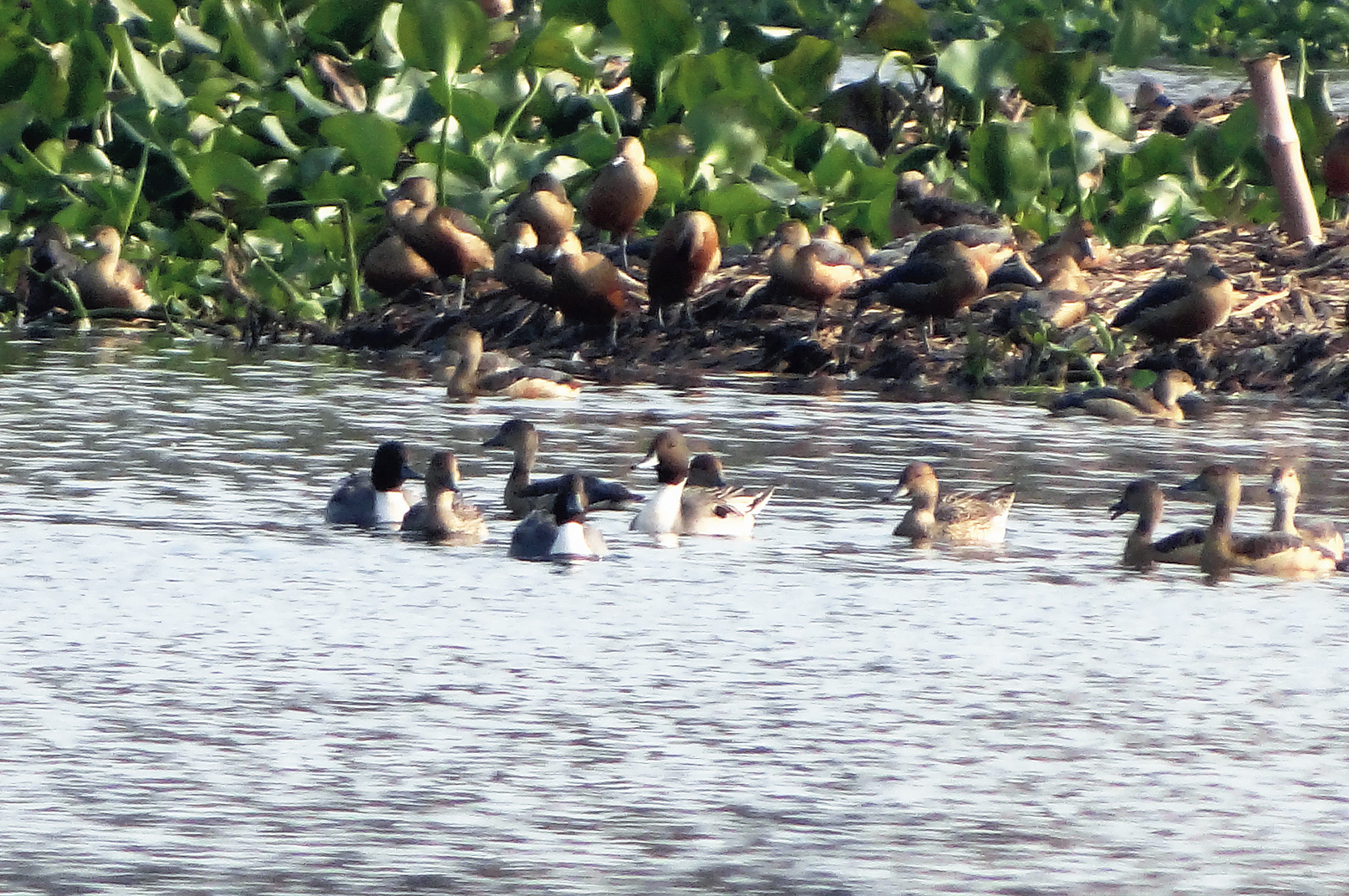It was a chirpy Christmas morning at Santragachhi Jheel as around 3,000 birds, many of them from across the Himalayas, flew down to the just-cleaned water body, much to the delight of birdwatchers.
Northern Pintails and Gadwalls, both trans-Himalayan migrants, were among the first visitors to the Jheel on Tuesday morning. Though annual visitors, the latest sighting brought cheer as birdwatchers had been sceptical since the water body wore a thick blanket of water hyacinth till last month.
Lesser Whistling Duck, a local migrant — birds that are found in the subcontinent and migrate from their breeding sites during winter — was as usual the dominant variety at the Jheel.
The water body was cleaned by a group of individuals this year after the authorities failed to clear it in time, raising fears that the birds would stay away this winter.
“This is very satisfactory news for us. We started cleaning the lake on November 22 and finished it on December 3,” said communications professional Mudar Patherya, who was among the citizens who took up the cleaning task. The students and management of The Bhawanipur Education Society College contributed a large chunk of the Rs 2.6 lakh spent on cleaning.
Prosenjit Dawn, a college teacher and an avid birdwatcher had gone to Santragachhi on Tuesday morning and got lucky. “I had seen two Northern Northern Pintails in the middle of November when the lake was still filled with water hyacinths, but today I saw seven Northern Pintails,” said Dawn, who lives nearby.
Dawn said he had seen 10 Gadwalls in the first week of December and on Tuesday he spotted 20.
Northern Northern Pintails breed in countries such as Kazakhstan, Kyrgyzstan, Mongolia and the Russian federation, according to the website of the International Union for the Conservation of Nature, and Gadwalls in Bosnia and Herzegovina, Kazakakhstan, Mongolia and the Russian federation.
Trans-Himalayan migrants avoid harsh winter in their breeding places and fly across the Himalayas to spend winter in the subcontinent, birdwatcher said. At the end of winter, they fly back to their breeding sites.
Though they have a similar descent, Northern Northern Pintails and Gadwalls have completely different tastes in food. Gadwalls are predominantly herbivorous, their diet comprises the seeds, leaves, roots and stems of aquatic plants as well as grasses and stoneworts, according to BirdLife International’s website. Northern Pintails, on the other hand, are “omnivorous” and their “diet consists of algae, seeds and rice, tubers, and the vegetative parts of aquatic plants, sedges and grasses, as well as aquatic invertebrates and small fish”.
Over 2,000 Lesser Whistling Ducks roosting in the lake or in flight above the vast expanse of the lake made for a spectacular sight. The ducks are local migrants that are in various places from Himalayan foothills to plains of Bengal during the non-winter months.
The estimate of 3000 birds surpasses the number of birds spotted at the lake last year.
Some resident birds such as Purple Heron and Bronze Winged Jacana, which are found as near as Andul and Mourigram in Howrah during summer and monsoon, were also seen at Santragachhi on Tuesday. “The Bronze Winged Jacanas are very young. They have immature wings,” said one birdwatcher.
A survey conducted in mid-January had shown only about 800 birds at the lake. The low turnout was blamed on unscientific cleaning, leaving little roosting space for the birds.











